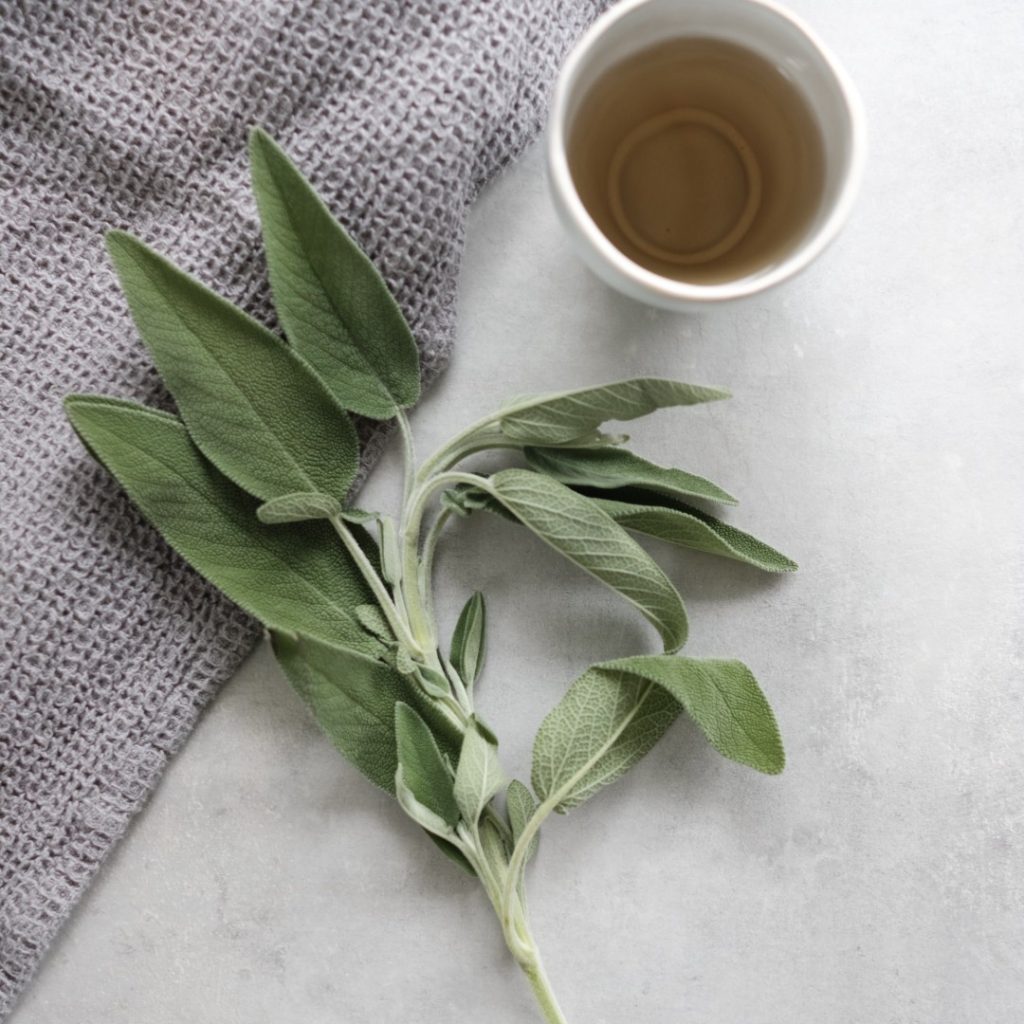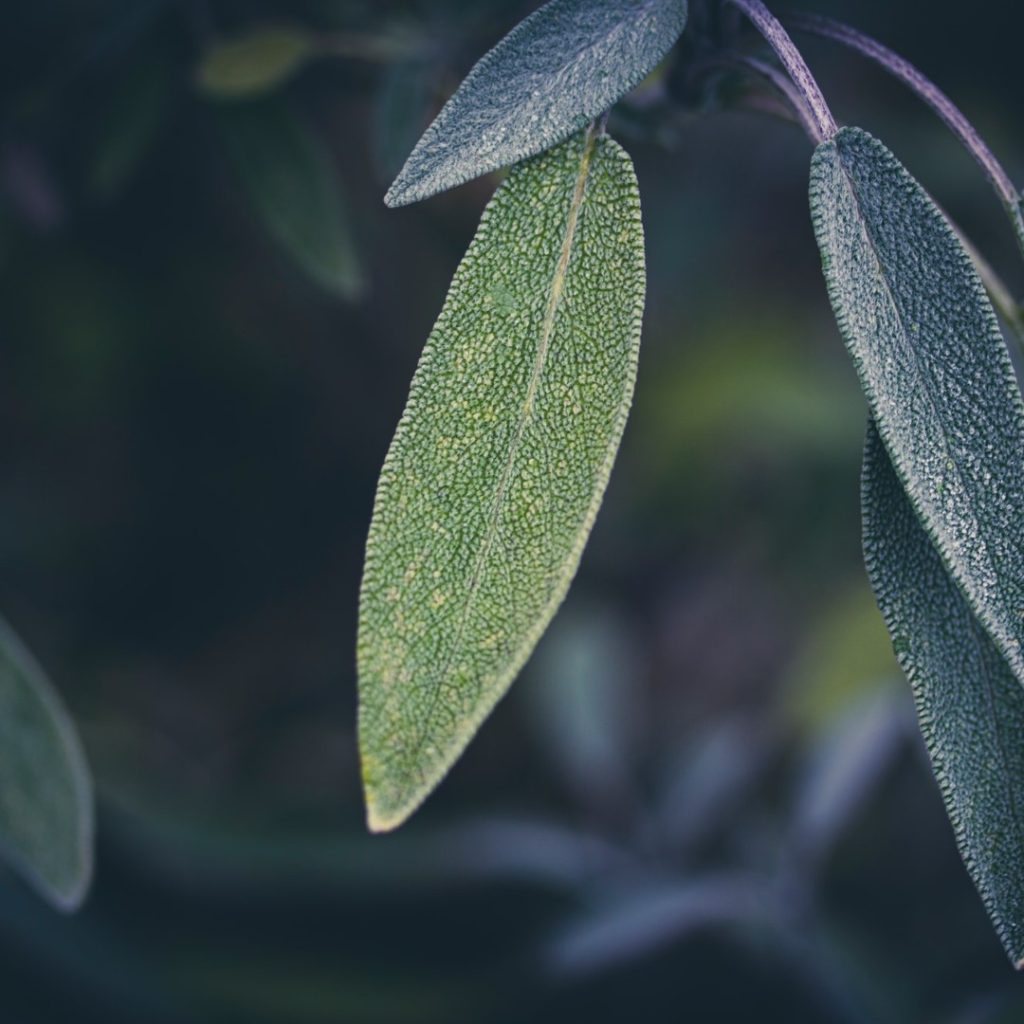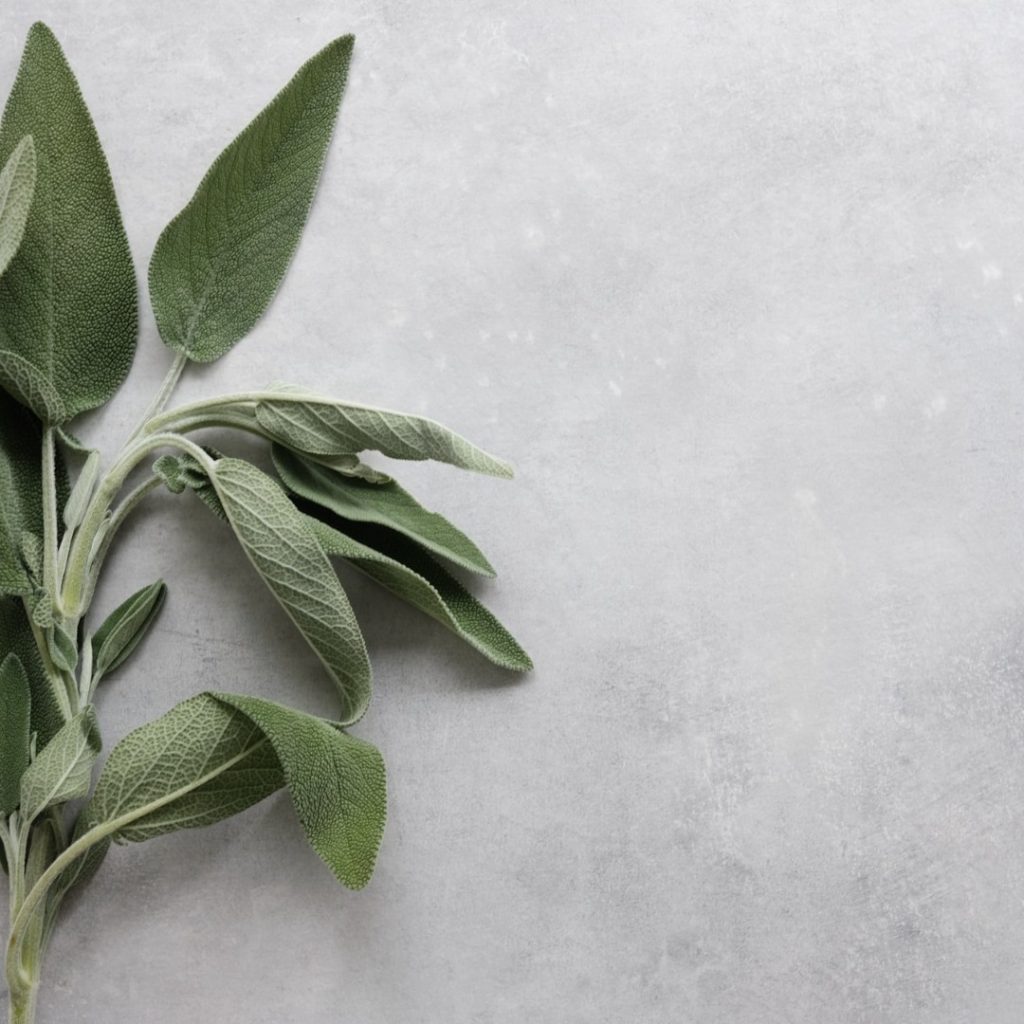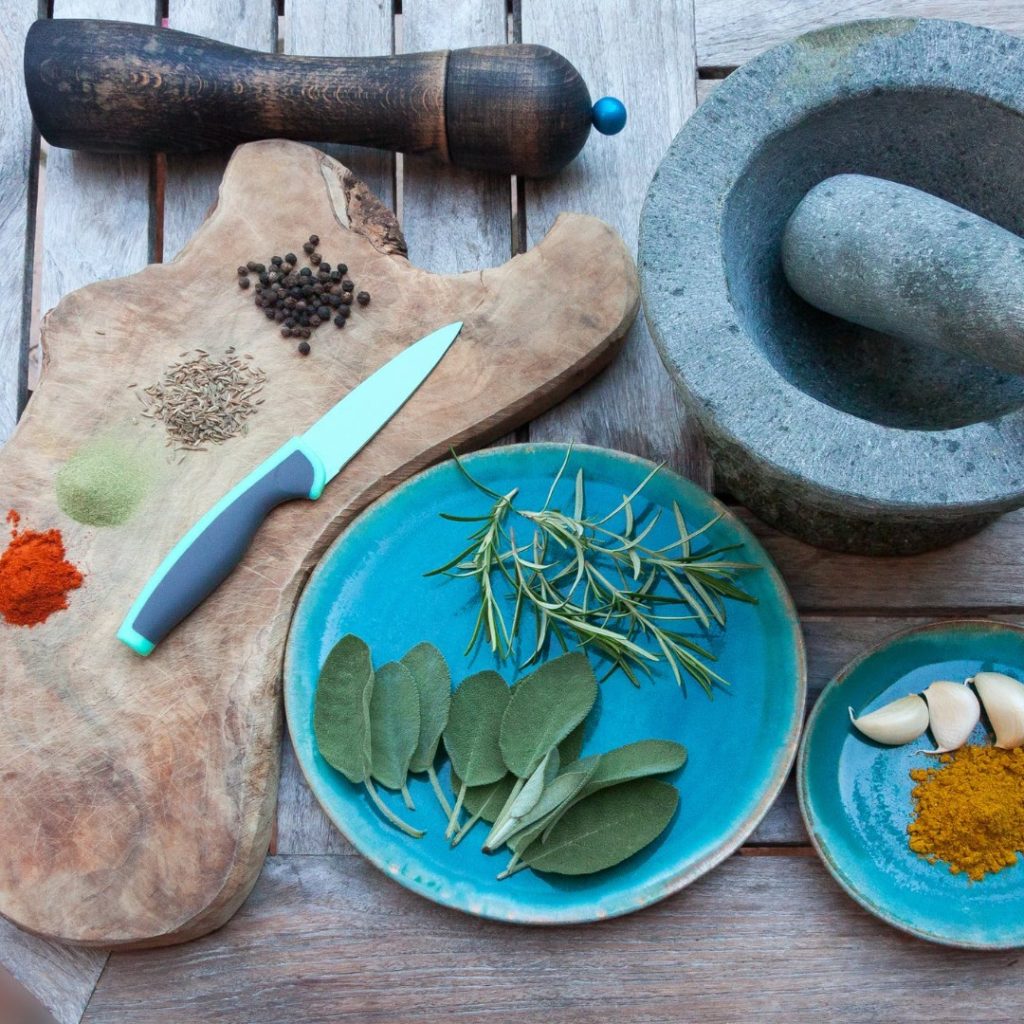
Sage refers to the plants from the genus Salvia, which comprises about 900 different species.
Sage is commonly used both in oral and topical forms as well as aromatherapy.
Sage contains:
- Vitamin K
- Iron
- Vitamin B6
- Calcium and Mangaese
- Vitamin C
- Vitamin A
- Vitamin E

Sage has numerous properties leading to health benefits including:
- Antibacterial
- Anticancer
- Antidiabetic
- Antilipid
- Antioxidant
- Antiparasitic
- Antiviral
- Antianxiety
- Blood pressure lowering
- Liver protection

Studies have shown sage to be possibly effective in the treatment of:
- Alzheimers Disease
- Hypercholesterolemia
- Menopausal symptoms
- Diabetes

Some studies have shown benefit with the use of sage in other conditions but further studies are needed regarding use in other conditions including:
- Memory loss associated with aging
- Lung cancer prevention
- PCOS
- Sore throat
- Sunburn
- Treatment of cold sores with topical sage
- Painful periods
- Diarrhea
- Loss of appetite
- Bloating
- Excessive sweating

How to add sage to your diet:
Note, sage has a strong flavor. A little goes a long way.
- Use as a garnish for soups or vegetable dishes
- Use in a marinade
- Add to soup
- Try roasting winter squash with sage
- Use ground sage in a seasoning blend for vegetable and meat dishes
Sage is considered safe in doses used commonly in food.
Get started with my recipes.
This article is for information purposes only and is not medical advice. Consult with your medical provider prior to any lab testing, diet changes or new supplement/medication.
Do you live in TX, CA, GA, NC or OH? Looking to improve your health through culinary medicine? Message me for information about my consultation services. @neversayneverwellness@gmail.com
Resources:
Natural Medicines Database. Accessed 2021. https://naturalmedicines.therapeuticresearch.com/
Lima, C., Azevedo, M., Araujo, R., Fernandes-Ferreira, M., & Pereira-Wilson, C. (2006). Metformin-like effect of Salvia officinalis (common sage): Is it useful in diabetes prevention? British Journal of Nutrition, 96(2), 326-333. doi:10.1079/BJN20061832
Lu Y, Foo LY. Polyphenolics of Salvia–a review. Phytochemistry. 2002 Jan;59(2):117-40. doi: 10.1016/s0031-9422(01)00415-0. PMID: 11809447.
Loizzo MR, Abouali M, Salehi P, Sonboli A, Kanani M, Menichini F, Tundis R. In vitro antioxidant and antiproliferative activities of nine Salvia species. Nat Prod Res. 2014;28(24):2278-85. doi: 10.1080/14786419.2014.939086. Epub 2014 Jul 21. PMID: 25039830.
Beheshti-Rouy M, Azarsina M, Rezaie-Soufi L, Alikhani MY, Roshanaie G, Komaki S. The antibacterial effect of sage extract (Salvia officinalis) mouthwash against Streptococcus mutans in dental plaque: a randomized clinical trial. Iran J Microbiol. 2015 Jun;7(3):173-7. PMID: 26668706; PMCID: PMC4676988.
Rahte S, Evans R, Eugster PJ, Marcourt L, Wolfender JL, Kortenkamp A, Tasdemir D. Salvia officinalis for hot flushes: towards determination of mechanism of activity and active principles. Planta Med. 2013 Jun;79(9):753-60. doi: 10.1055/s-0032-1328552. Epub 2013 May 13. PMID: 23670626.
